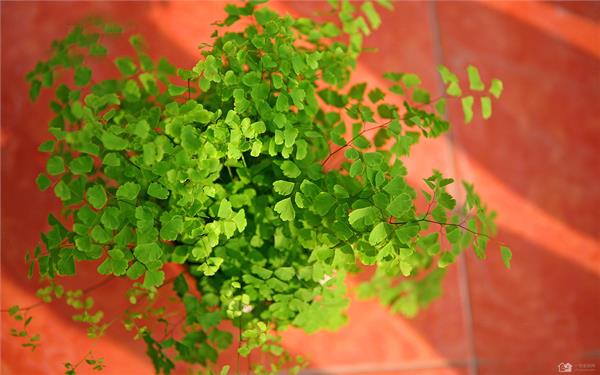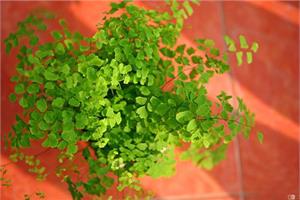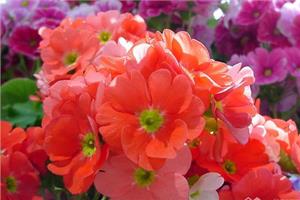What is the culture method of Dryopteris Dryopteris? points for attention in Dryopteris culture
What is the culture method of Dryopteris, and how to raise it? I believe there are many friends who do not know much about Dryopteris. Today, I would like to introduce the breeding methods of Dryopteris and Dryopteris. Next, let's take a look at what is the culture method of Dryopteris.

1. Morphological characteristics
Dryopteris Dryopteris is a perennial herb with a plant height of 15m ~ 40m. Its rhizome is slender and transverse, densely covered with brown lanceolate scales.
Its leaves are distal or proximal; the stalk is usually 5mm long, about 1mm thick, slender, chestnut black, with a glossy surface, its base is covered with the same scales as the rhizome, the leaf blade is ovate triangular, the length is between 10m and 25mm, the width is 8mm, it is pointed, the base is similar to the wedge, the part below the middle is bipinnate, and the part above the middle is mostly odd-pinnate.
The number of pinnae is between 3murmuri 5 pairs, basically alternate, oblique and upward, and with a handle (up to 1.5 cm long). The basal pair of pinnae is larger, 4.5 mi long, 2.5 mi wide, oblong-ovate, obtuse, odd-pinnate, lateral ultimate pinnae 2UT 4 pairs, alternate, oblique upward, distance 6Mul 15 mm apart. Almost equal in size or just a pair of slightly larger, symmetrical or asymmetrical oblique fan-shaped or subrhomboid at the base, 1.2 mm long and 1 mi 1.5 m wide, with 4 lobes lobes shallowly or deeply divided into strips, with an obtuse rounded apex of sterile lobes, with broad triangular serrate or Erose denticulate, fertile lobe apex truncated, straight or slightly sunken. The entire or both sides have etched denticulate teeth, the two sides are entire, the base is narrowed into an oblique broad wedge, with a short chestnut black stalk (1mm long Murray 2mm), the top pinnae are fan-shaped, and the base is narrowly cuneate, which is often larger than the lateral pinnae below it, and the stalk is up to 1 cm in length. The second pair of pinnae is 2.5 meters away from the base, and the upward pair is isomorphic to the basal pair of pinnae and becomes smaller.
Its veins are often dichotomous and bifurcate, reaching the edge. The leaves are thin herbaceous after drying, the color is grass green or brownish green, and there is no downy on both sides; the leaf rachis, each pinnacle and petiolule are all the same color as the petiole, but often twist slightly to the left and right. The number of sporangia is 10 per pinna, which grows across the upper edge of the fertile ultimate pinnae; the cover of the sporangium is long and long kidney forms a round kidney shape, the upper margin is straight, yellowish green, brown when old, membranous, entire, persistent. The periphery of the spores is decorated with coarse grains and is often preserved after treatment.
2. Culture methods of Dryopteris Dryopteris
1. Soil: Dryopteris likes loose, permeable and fertile calcareous sandy loam. when potted, the cultivated soil can be mixed with loam, rotten leaf soil and river sand.
2. Watering: the fern likes the humid environment and should be fully watered in the peak growing season. In addition to keeping the basin soil moist, we should also pay attention to the high air humidity and sprinkle water around the plant when the air is dry. Especially in summer, it is necessary to pour 1 Murray water twice a day. If there is a lack of water, it will cause the leaves to shrink. Watering taboo basin soil when dry and sometimes wet, easy to make the leaves yellow.
3. Sunshine: like bright scattered light, afraid of direct sunlight. If the light is too strong, the leaves will be withered and yellow or even die, which can be properly shaded in summer, and most of the leaves will be withered and yellow if the strong light is directed for a long time. It should be placed in a dark place indoors, and it can grow normally even if it is placed for 1 year.
4. Temperature: like warmth and cold resistance, the suitable temperature for growth is 21 ℃ 25 ℃ during the day and 12 ℃ at night. In winter, the leaves can keep fresh green when the temperature is above 5 ℃, but frost injury will occur when the temperature is lower than 5 ℃.
5. Fertilization: apply 2murmur3 times a month dilute liquid fertilizer, do not stain the leaves, lest cause rotten leaves, because of the calcium-loving habits of Dryopteris, basin soil should add appropriate amount of lime and broken eggshell, the effect of regular application of calcium fertilizer will be better. In winter, we should reduce watering and stop fertilizing.
If the plant is damaged by scale insects, 40% omethoate 1000 times solution can be used for control.
7. Pruning: after autumn, as the temperature drops, Dryopteris will grow slowly, and the old leaves will gradually turn yellow, so cut them off.
III. Matters needing attention in the culture of Dryopteris
1. Know the culture method of Dryopteris Dryopteris, know that Dryopteris is naturally fond of warm, humid and semi-cold environment, and hate direct sunlight, so it is best to put the plant indoors where the sun is out of reach. After all, too much light is easy to cause scorch on the edge of the leaf.
2. Ferns grow in a humid environment, and Dryopteris Dryopteris is no exception. During cultivation, in addition to keeping the soil moist, water mist is often sprayed on the leaves to improve the humidity in the air. When the plant is yellowing, it is often caused by insufficient humidity. Of course, this may also be caused by frost injury.
3. The culture methods and matters needing attention of Dryopteris should be changed once every spring, and the dried leaves and old roots should be trimmed at the same time. The basin soil should also be replaced with fresh, fertile and loose rotten leaf soil, and it is best to add a small amount of brick dust inside.
The above is for you to introduce the methods of how to raise Dryopteris, I hope these introductions can help you. Interested friends might as well refer to the breeding method of Dryopteris introduced above and raise a healthy fern in person.
Related
- Wuhan Hospital Iron Tree Blooming Result Was Instantly Frightened by the Gardener Master
- Which variety of camellia is the most fragrant and best? Which one do you like best?
- What is the small blue coat, the breeding methods and matters needing attention of the succulent plant
- Dormancy time and maintenance management of succulent plants during dormancy
- Minas succulent how to raise, Minas succulent plant pictures
- What are the varieties of winter succulent plants
- How to raise succulent plants in twelve rolls? let's take a look at some experience of breeding twelve rolls.
- Attention should be paid to water control for succulent plants during dormant period (winter and summer)
- Watering experience of twelve rolls of succulent plants
- Techniques for fertilizing succulent plants. An article will let you know how to fertilize succulent plants.



